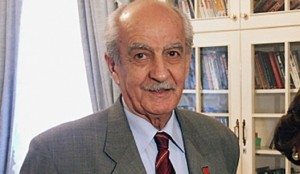SO I HEAR… AND THE WORLD WATCHES…
The following is a timeline I composed three years ago, reflectig my disappointment at President Obama for not honoring his campaign pledge to recognize the Armenian Genocide. The piece was published last week in Asbarez newspaper following the passage of the French Senate's bill: Criminalizing the denial of the Armenian Genocide:
April 25, 2009 11:00 AM – I am checking my emails. The subject on one of the email reads: “Obama Betrays Armenians.” Since yesterday, I’ve received a half a dozen emails on the same subject. Armenians have rallied to continue their efforts to make U.S. congress officially recognize the long awaited acknowledgement of the “Genocide” So, I hear…
BEFORE THAT – same day 9:00 AM – I pick up the weekend issue of our local newspaper, the Glendale News-Press, and the front-page article with big bold letters says: “Obama’s words rebuked,” I read the whole article. “Armenians are disappointed… Obama danced around the language.” The Armenian communities from “sea to shining sea” are outraged and a firestorm is soon to be ignited. Was the promise a feel-good campaign rhetoric? I am thinking…
BEFORE THAT Politifact.com, the Obameter website, questions Pres. Obama’s integrity, having concluded that he had broken his promise on the Armenian Genocide – one of the 511 campaign promises that the website keeps track of. People are watching…
BEFORE THAT Mom calls and says, “It is April 24th, are you watching the TV? – President Obama is on.” just barely, I get to hear the last few sentences. He sympathizes with Armenian cause. “Nothing can bring back those who were lost in the “Meds Yeghern.” He uses the Armenian phrase “Meds Yeghern” which translates into “The Great Calamity” avoiding using the term “genocide” to describe the atrocities of Ottoman Turks to eradicate Armenians from their homelands. His statement falls short from his pledge. So, I hear…
BEFORE THAT – April 6, 2009 – during a press conference in Ankara, a journalist asks Pres. Obama if he is going to stand firm on his campaign promise. Obama answers: “My views are on the record and I have not changed views.” The reporter presses him about not using the term “genocide.” And he maneuvers around the topic without using the word “genocide.” I am anxious to see, on April 24th, how he is going to recognize the “Genocide” a promise he had made to the Armenian community during his presidential campaign. I am thinking…
BEFORE THAT – November 4, 2008 – I am watching on TV, the sea of crowd at Chicago’s Grant Park, welcoming the newly elected president Obama. I share tears of joy with Oprah, Jesse Jackson and the whole crowd. I am witnessing the unfolding of a new era in the American History – a ripple that will forge new relations and softens the socioeconomic conflicts at the International stage. And the world watches…
BEFORE THAT – January 19, 2008 – as a presidential candidate and as a senator, Obama, makes a promise to American-Armenian community and pledges that he would officially recognize the “Genocide.” Armenians are hopeful and passionately support Obama… So, I hear…
BEFORE THAT – March 7, 2006 – the ambassador to Armenia, John Evans, is recalled by President Bush’s Administration, back to Washington. He had referred to Armenian massacre of 1915 in Ottoman Turkey as “Genocide.” Armenians protest. They are asking John Evans to come back. So, I hear…
BEFORE THAT – April 24, 1995 – I am driving my kids, ages 21, 16, 10, to Montebello, California, where Armenians have erected a memorial monument for the Genocide. I want, us, to be part of the 80th anniversary commemoration service. So, I drive…
BEFORE THAT – April 24, 1965, Tehran. We are gathered, a crowd to the capacity, in the playground of St Mary’s, Armenian church and the connecting high school. I am 16, I hear the priest conducting a mass for the ravished souls of Armenians massacred 50 years ago in Turkey. So, I hear…
BEFORE THAT – August 22, 1939 – on the eve of his murderous attack against Poland, Hitler makes an address to his chief military commanders. He finishes his remarks by saying “Who, after all, speaks today of the annihilation of the Armenians?” 10 million people are wiped out by Nazis. And the world watches.
BEFORE THAT – March 15, 1921 – Soghomon Tehlirian, in broad daylight and in the presence of many witnesses assassinates Talat Pasha, the architect of the Armenian Genocide. It takes the jury slightly an hour to acquit Tehlirian. The trial, taking place in Germany, influences Rafael Lemkin, a Polish lawyer to coin the term “Genocide”
BEFORE THAT my ancestors living in Ottoman, Turkey, are slaughtered by Turkish Militia or are evacuated community by community and marched to their deaths in the deserts. And the world watches.
BEFORE THAT – on April 24, 1915, Talat Pasha orders the arrest and persecution of all the Armenian leaders, bankers, professors, doctors, lawyers and many business professionals, in Constantinople and masterminds the massacre of 1.5 million Armenians. And the world watches the first ethnic cleansing of the 20th century.
Here is the link to Asbarez newspaper:
http://asbarez.com/100586/so-i-hear…-and-the-world-watches…/













